I had done a bit of “quilt-as-you-go” strip piecing to make a pillow cover at one time, but this is the very first time that I pieced something, batted it, backed it, and quilted it by machine rather than by hand. This piece measures 24 inches by 24 inches, and I quilted it standing up on my Janome Skyline S5.
I made this piece specifically to jump into machine quilting with something that I was not emotionally invested in. I used the standard foot that came with my machine, which is called the “A” foot. I wanted to use the Even Feed (Walking) Foot, but I was intimidated by it, and wasn’t really sure how to put the foot on the machine. I am quite sure that the quilting would have come out better if I had used the walking foot.
This piece is something for my husband to rest his feet on when he is lounging in bed but does not want to bother to take off his shoes.
I decided to baste this piece with straight pins. Because it was relatively small in size I figured I could get away with using the straight pins. It worked out fine. I eventually want to purchase this Baste Your Quilt Kit from the Leah Day web site, but I have not gotten around to doing that yet.
I started quilting from the center of the piece. I originally wanted to do concentric circles, but thought that might be too hard in a first attempt, so I decided to follow the insides of the strips. That worked rather well. I also pulled the bottom thread to the top so I would be able to keep it from getting tangled. Later the ends were sent to the back where they were knotted and buried.
When I got to the point where I had to traverse long portions of the project it seemed more difficult to control the piece. Putting my hands on either side of the work and letting the feed dogs to their job seemed to help.
When I quilt the companion to this piece for my side of the bed I am going to try something different.
Here are some observations about how things worked out.
The white thread looked best in the lighter areas of the blocks. That makes sense. I think it might be a good idea to pick one light color of thread and keep it limited to the light areas. I could also pick one dark color and keep that limited to the dark areas.
Light threads on light fabrics don’t look as good when they run in contrast to the direction of the strips.
The light threads on the dark fabric doesn’t look as bad when they follow the direction of the strips.
So there appear to be two factors at work here. The thread color and the thread direction. It seems as if the direction actually matters more than the color in these log cabin blocks. If I can get both factors to harmonize on the next piece I should get a better result.
By the way, I could definitely notice that the top was feeding more slowly than the bottom especially when the lines of stitching traversed large areas of the piece. The walking foot will hopefully fix that.
Note: This post was held for publication today, but was originally written last week before I attended my sewing class at Pocono Sew and Vac where I learned how to use the walking foot.
This piece has been kitty approved.
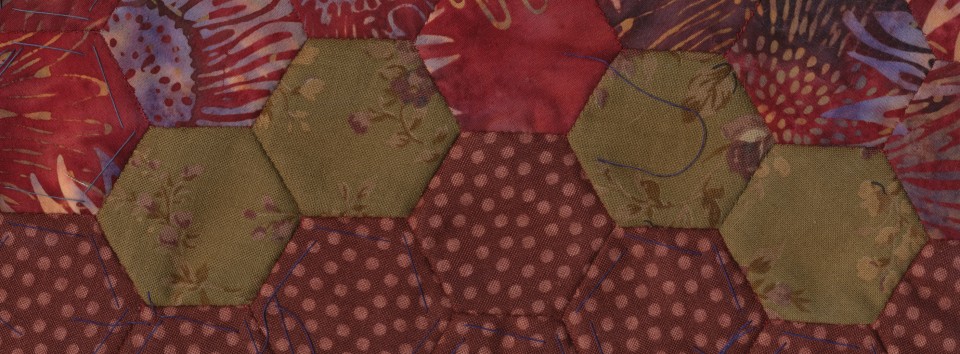
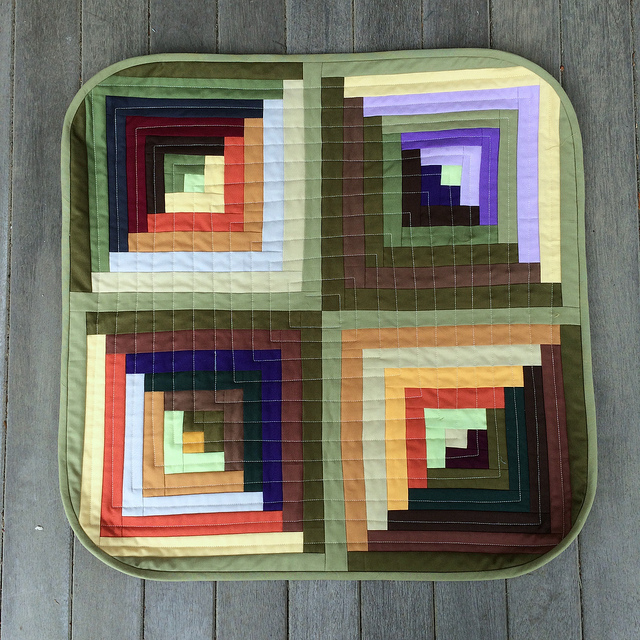
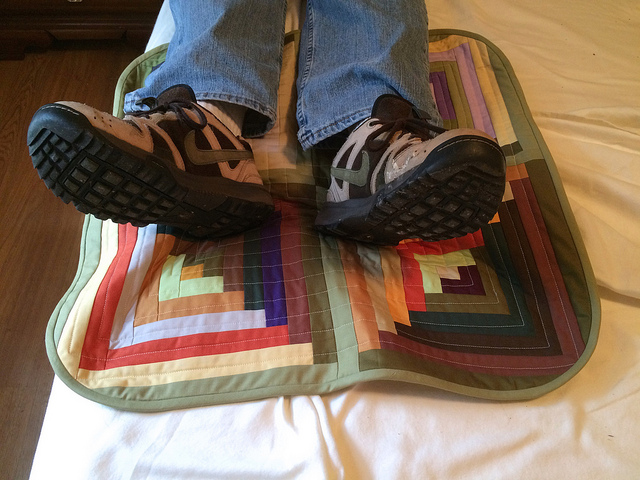
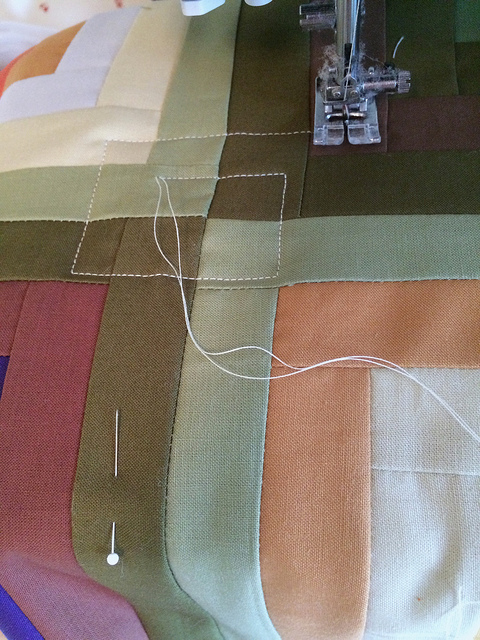
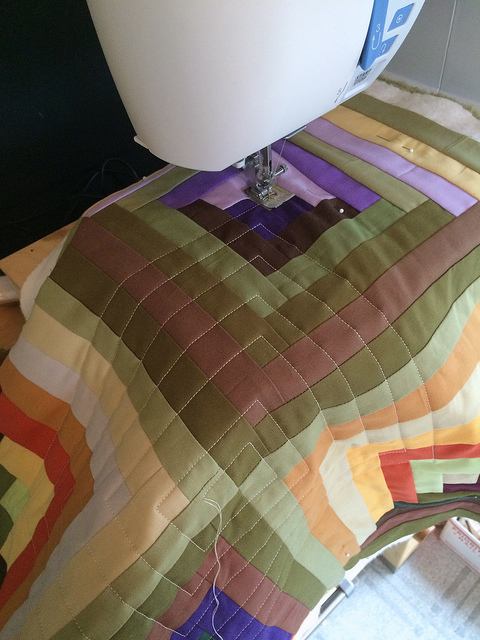

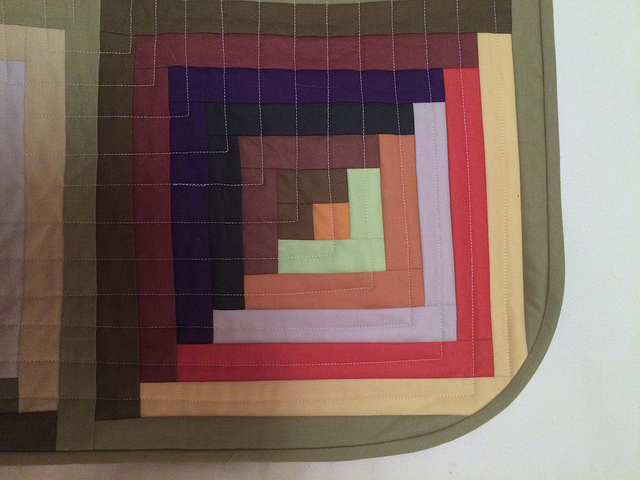


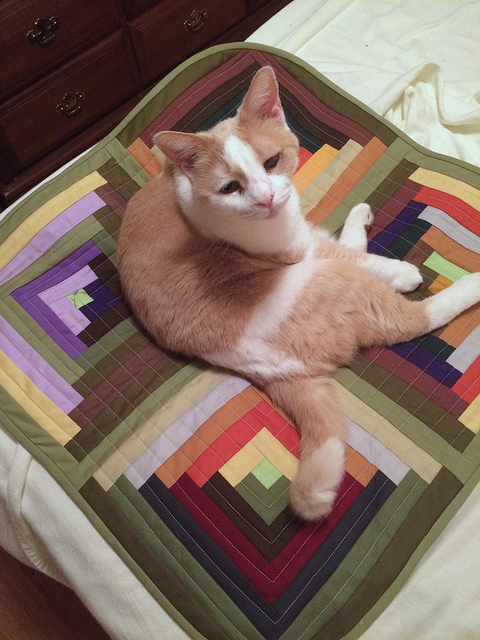
The walking foot is your friend! It’s very well done. I personally love white or light gray on dark colors. It really adds depth to the project. You were smart to go with lines instead of spirals to start (but now that you have practiced, you are ready to try a spiral)!
Thanks. I really like the walking foot. I am hoping to be able to take a class on using it some time soon. I wasn’t quite ready when the guild offered the class last time. I didn’t even know how to change the foot, and I knew very little about my machine. Thanks for the vote of confidence on my handling a spiral quilting design. I will eventually do one, although I am going to do a little bit of straight quilting first. I have to build my confidence level.
And congrats on nabbing your domain name. When we talked about it last November you weren’t quite ready to go for it. I am really glad it was still there for you because it is such a cool name. Good luck with your quilting business and see you at the next guild meeting.
Pingback: My EPP UFO Projects | Hexy Lady